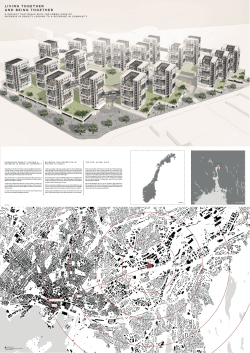
Helseteknologi, innkjøp og ledelse som verktøy for økt kvalitet og
Kathrine Myhre, CEO Oslo Medtech, Healthworld 16th September 2015 Helseteknologi, innkjøp og ledelse som verktøy for økt kvalitet og effektivisering i helse og omsorg Key figures - Oslo Medtech • Founded November 2009 • Cluster, organized as a nonprofit membership organization • 180 members/partners • The full health value chain represented • 37 bill NOK turnover and 5,7 % growth in value creation in 2013 • Partner in Innovation Norway cluster program since 2009 Vision, mission and goal Vision Oslo Medtech is to become one of the most innovative global health technology clusters within 2020. Mission Our mission is to develop and industrialize world class health technology products and services that enables sustainable and high quality treatment and care, and Norwegian Medtech industry growth. Main goal To increase the competitiveness of the companies in the cluster and strengthen the attraction of the cluster internationally The cluster Oslo Medtech Results and effects Result goals: Effect goals: Increased innovation ability Increased industry growth and value creation World class health tech products and solutions Sustainable and high quality treatment and care Budskap Helseteknologi, innkjøp og ledelse som verktøy for økt kvalitet og effektivisering i helse og omsorg Norwegian and global societal trends and challenges Less hands In healthcare Demografical changes Ricing health costs Access to technology Challenges – «Eldrebølgen» Number of elderly people Background & aim • PWC report, June 2015 • Trondheim, Bergen, Stavanger, Kristiansand and Oslo • Nordre Aker, St.Hanshaugen, Stovner, Søndre Nordstrand, Østensjø • Spent 21 bill NOK in 2013 health and care • 90% of the costs are related to services at home – and at institutions (hjemmetjeneste og institusjon) Background & aim • Large differences in spent resources to health and care between the large cities in Norway • Aim of report – to identify the factors that explain the differences • Identify future actions Ressursbruk per innbygger ifht gjennomsnitt i ASSS, 2013 Findings: What leads to resource reduction? • Organizational culture: • Coordination and dialogue between procurement unit and home care unit • Collaboration – respect and trust • Visionary leaders with clear values, acting like role models • Aligned «message» between political and administrative management Findings: What lead to resource reduction? • Visionary management; focus on goals and strategies, and that management are “cultural carriers” • Focus on the «customer»/user • Room for innovation, creativity and try new things • Active involvement of the employees • Trust and respect between management and employee St.Hanshaugen / Oslo • Visionary management; focus on future • Invested in health technology (clinical trials and procurement) (Velferdsteknologi) • Focus on innovation and user needs, and involvement early in the patient pathway • Aim and motivation: • Prevention • Employee and patient involvement • Independent living • Reduction of cost, and more efficient workflow https://vimeo.com/80982444 Daily health check - monitoring heart, diabetes, COPD, etc St.Hanshaugen/Oslo – extraordinary results • High motivation among employees • The positive results, and motivation, is spreading to other areas in the • Coordination among the management in St.Hanshaugen – do not create clients for other areas • The fact that the political and administrative management is acting as a collective unit, healthcare emerges as a united service. Positive effect on cost (reduction) Innovative Procurement Follow us on @OsloMedtech OsloMedtech Contact www.oslomedtech.no mail@oslomedtech.no 19 19
© Copyright 2025













